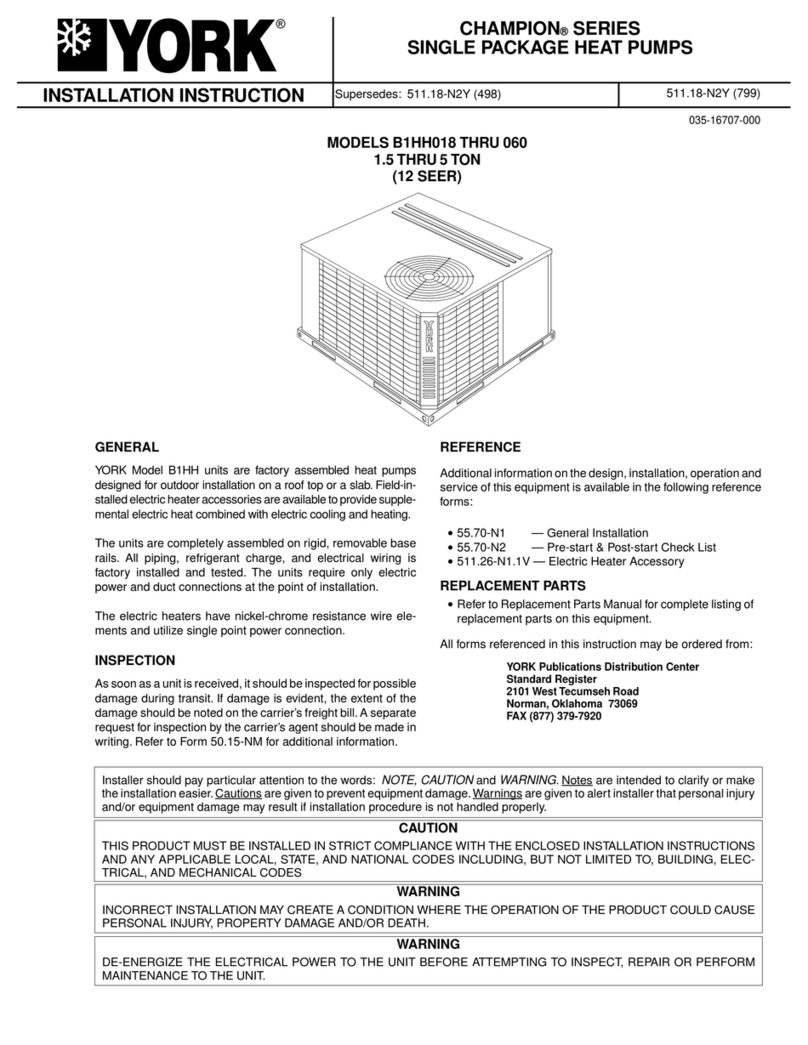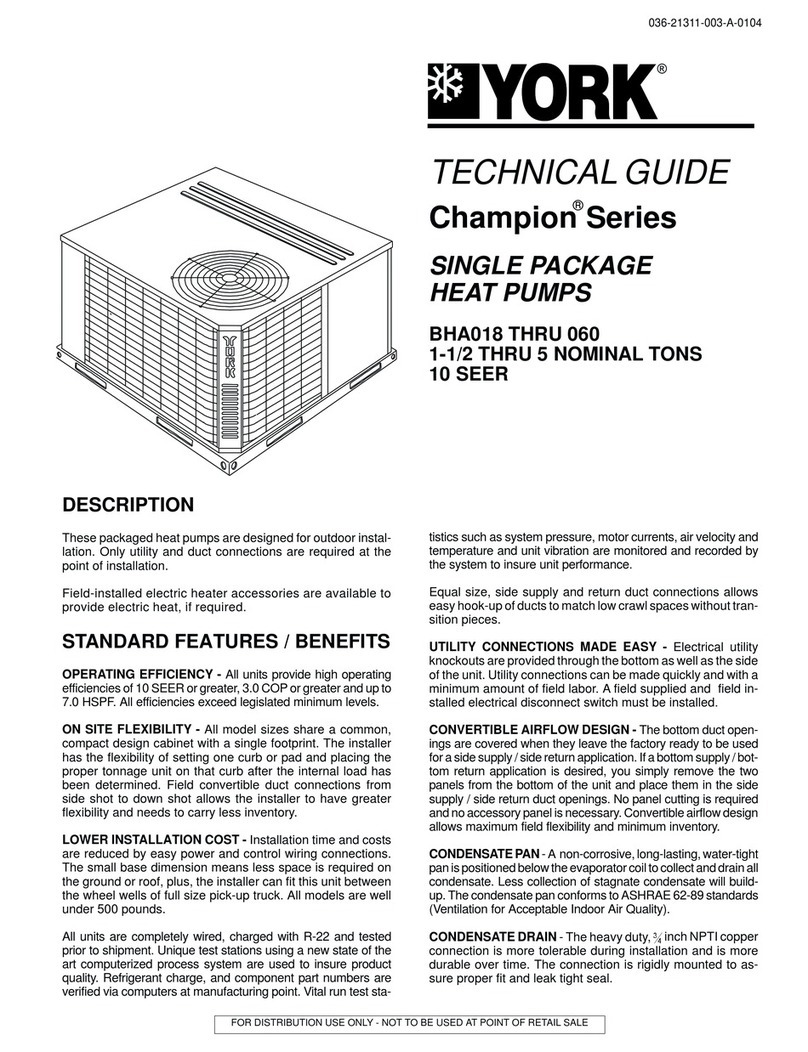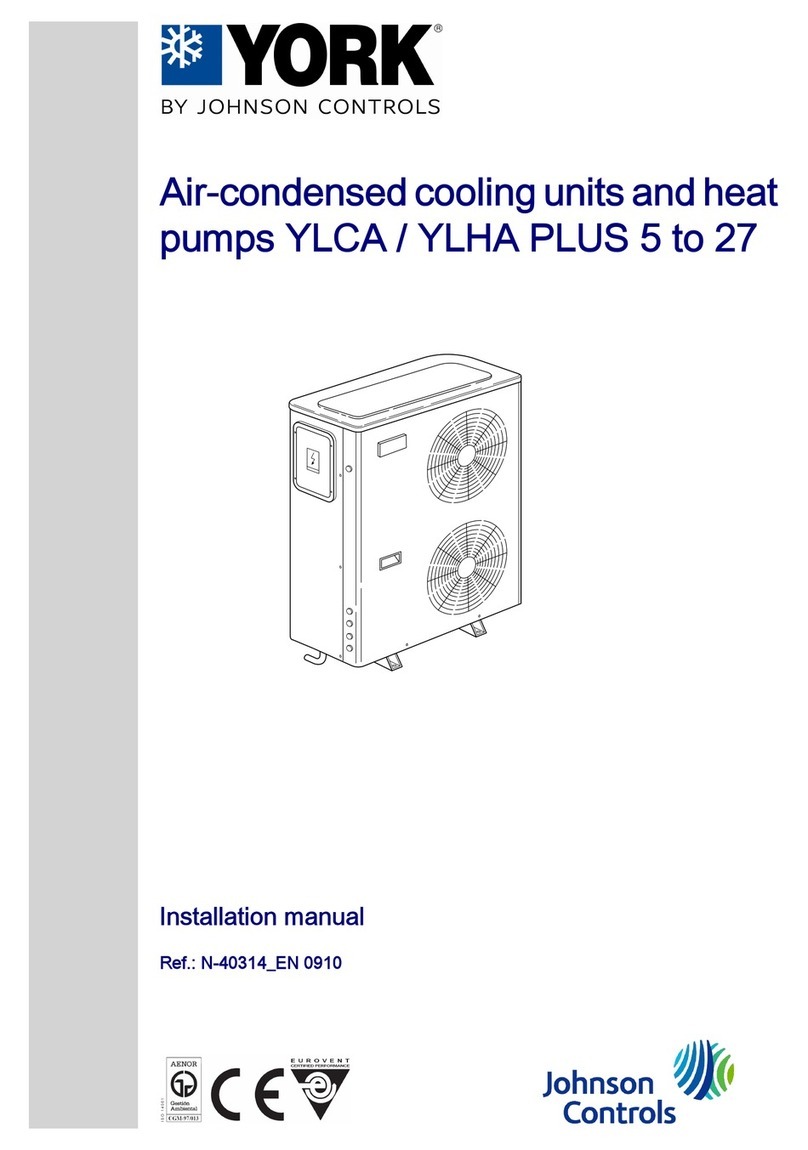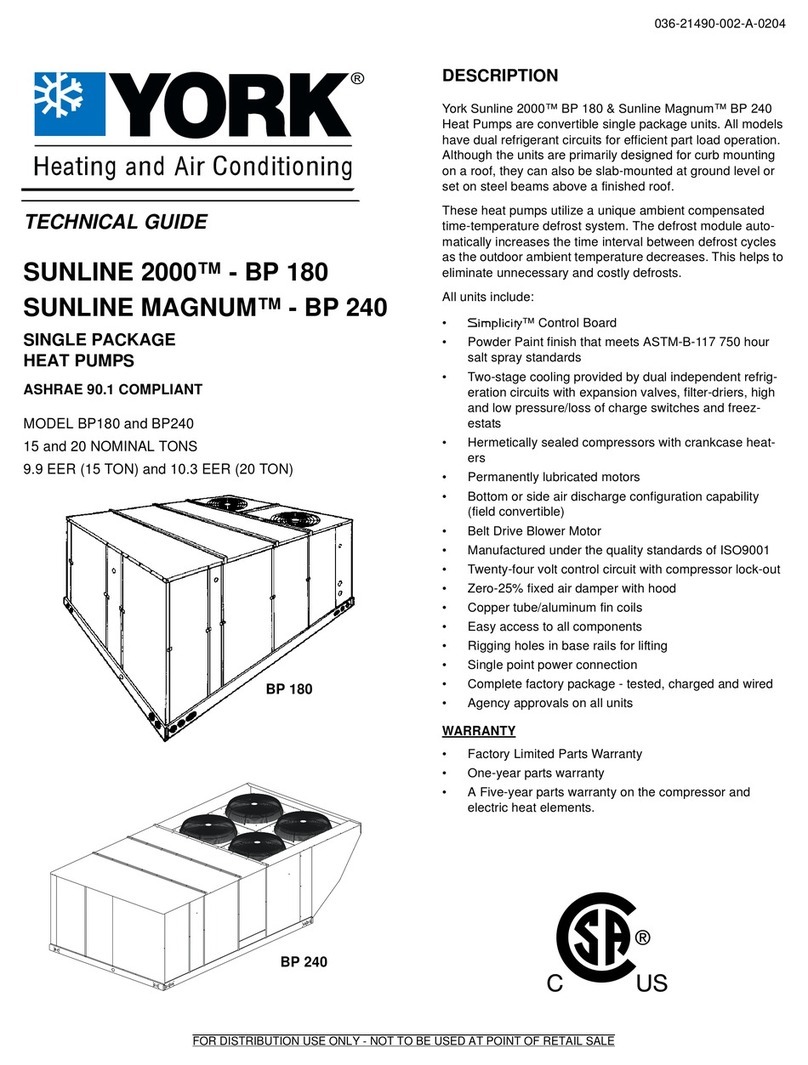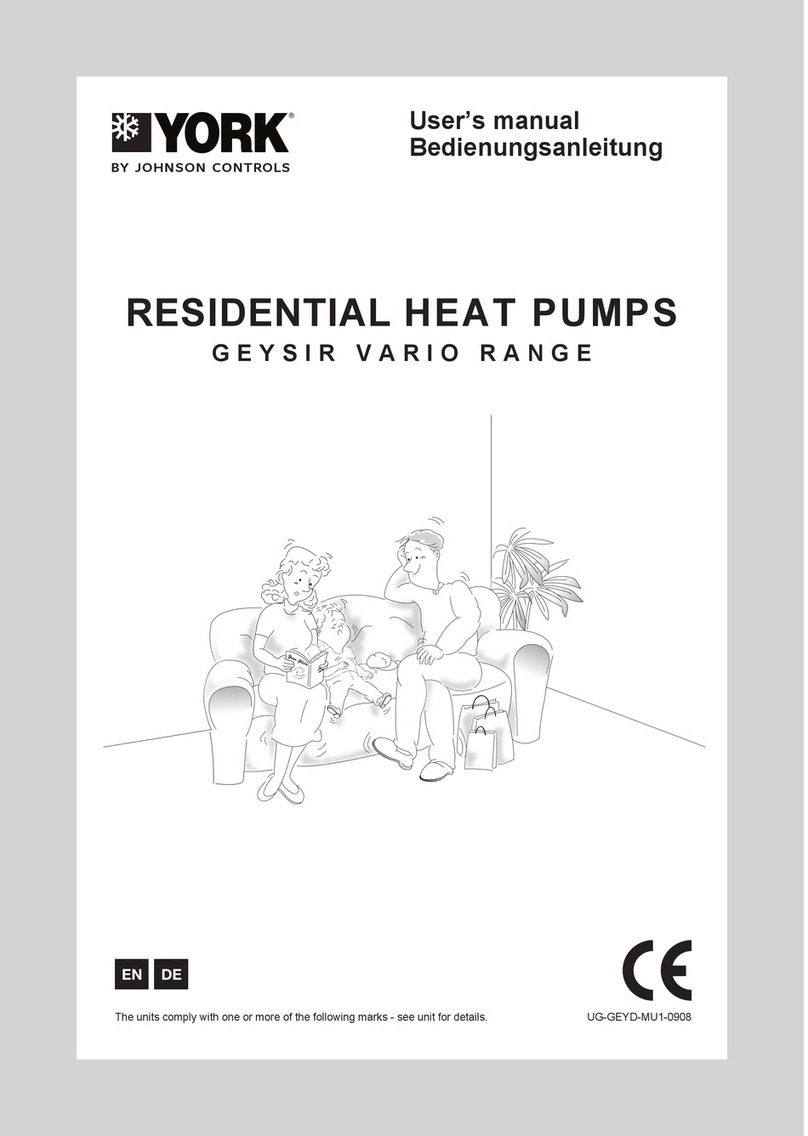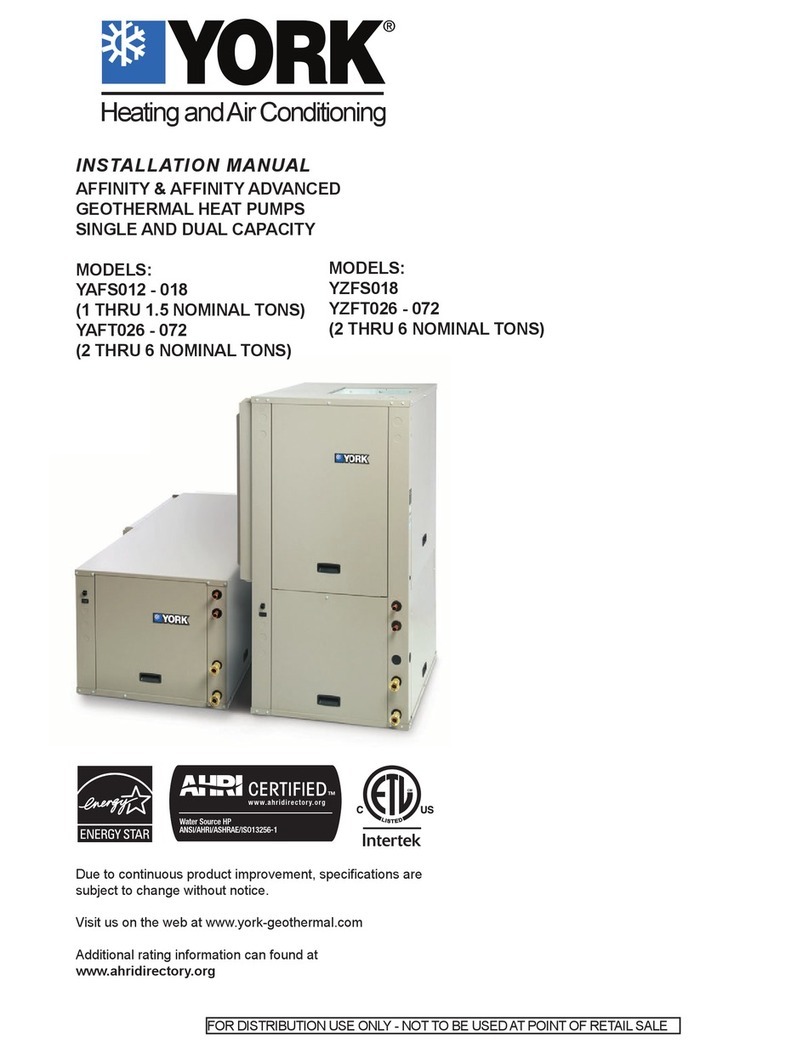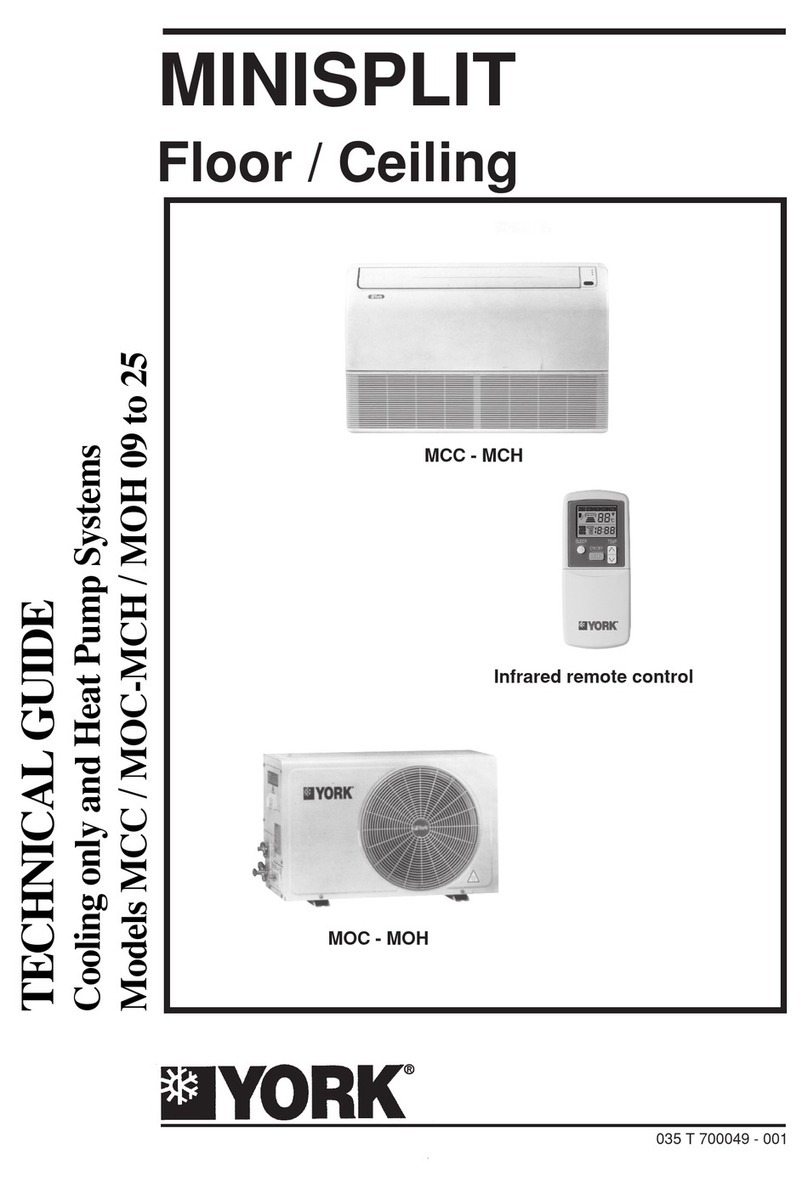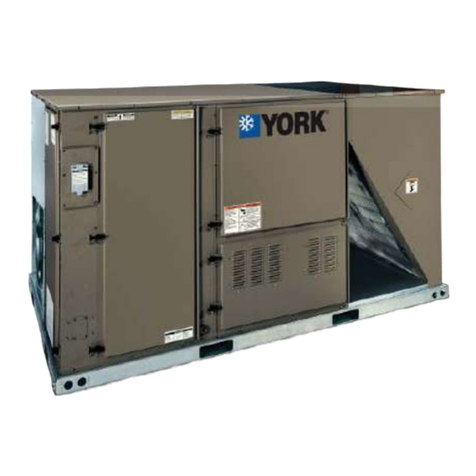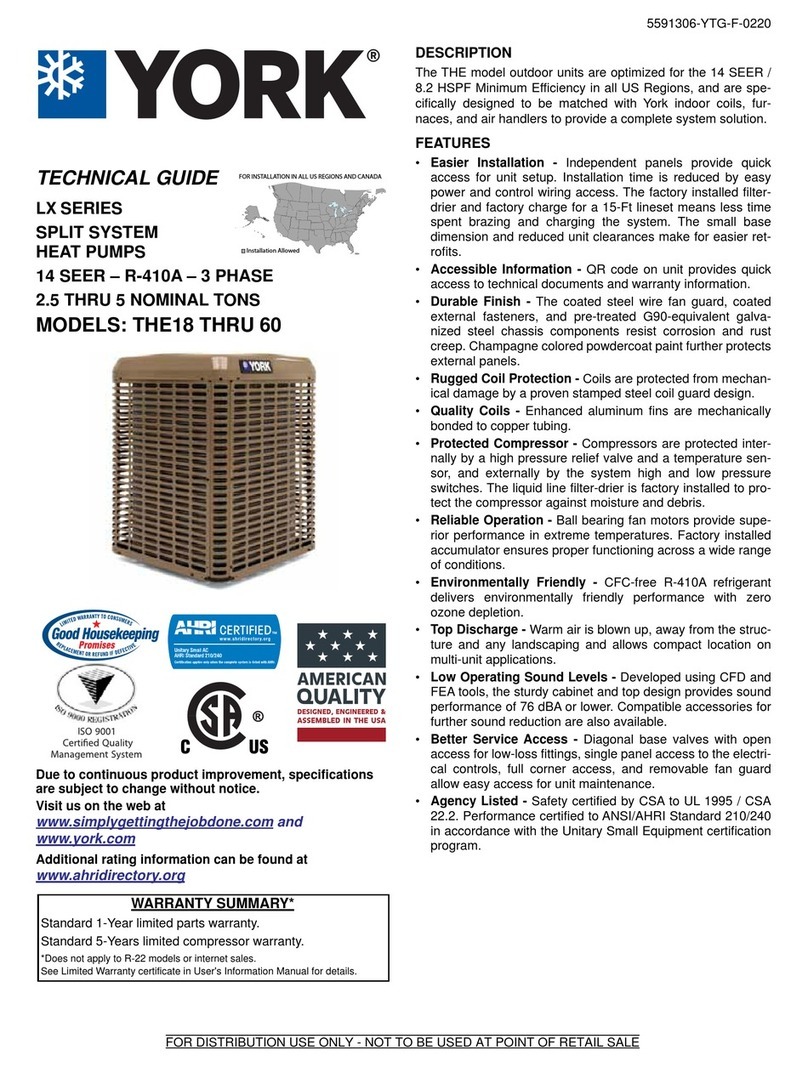
The drain line MUST be trapped because the coil is located on
the negative side of the supply air blower, and it must be pro-
tected from freezing temperatures.
A7/8" OD drain connection extends through right hand side of
cabinet. Refer to Fig. 7 for recommended drain piping.
The drain connection is located on the same side of the unit as
therefrigerantconnections.Thelineshouldbeinsulatedwhere
moisturedrippagewillbeobjectionableorcausedamagetothe
area.
The 3" dimension must equal or exceed the negative static
pressure developed by the supply air blower. If it does not, the
condensate will not drain properly and may overflow the drain
pan. The trap must be at least 2-1/2" deep to maintain a water
seal under all operating conditions, especially during blower
start-up.
NOTE: The unit may have to be raised off the floor to allow
enough height for the trap.
SUPPLY AIR BLOWER ADJUSTMENT
The RPM of the supply air blower will depend on the required
CFM,theunitaccessoriesandthestaticresistancesofboththe
supply and the return air duct systems. With this information,
the RPM for the supply air blower can be determined from the
blower performance in Table 4.
Knowing the required blower RPM and the blower motor HP,
the setting (turns open) for the supply air motor pulley can be
determined from Table 3.
Each motor pulley has:
1. Athreaded barrel with two flats (or notched recesses) 180
degrees apart.
2. A movable flange with one set screw.
After the movable flange has been rotated to the proper
number of “turns open”, the set screw should be tightened
againsttheflatonthebarreltolockthemovableflangeinplace.
If the pulley includes a locking collar, the locking collar must be
loosened to adjust the setting of the movable flange.
Note the following:
1. The supply air CFM must be within the limitations shown in
Table 2.
2. All pulleys can be adjusted in half turn increments.
3. The tension on the belt should be adjusted for a deflection
of3/16 of an inch perfoot ofbeltspanwithanapplied force
of 2 to 3 pounds. This adjustment is made by moving the
blowermotormountingplate.RefertoFigure8.Turningthe
adjustment bolt (B) moves the motor mounting plate up or
down.
NOTE: Never loosen the two nuts (C).
Two hex nuts (A) have to be loosened to move the mount-
ingplateandretightenedafterthemountingplatehasbeen
moved to the proper position.
4. All pulleys are factory aligned.
5. All supply air motor pulleys are factory set 3 “turns open”.
After the supply air blower motor is operating, adjust the resis-
tances in both the supply and the return duct systems to bal-
ancetheairdistributionthroughouttheconditionedspace.The
job specifications may require that this balancing be done by
someone other than the equipment installer.
TocheckthesupplyairCFMaftertheinitialbalancinghasbeen
completed:
1. Drill two 5/16 inch holes in the side panel as shown in Fig-
ure 9.
2. Insert at least 6" of 1/4 inch tubing into each of these holes
for sufficient penetration into the air flow on both sides of
the indoor coil.
NOTE: The tubes must be inserted and held in a position
perpendicular to the air flow so that velocity pres-
sure will not affect the static pressure readings.
3. Usinganinclinedmanometer,determinethepressuredrop
across a dry indoor coil. Since moisture on the coil may
varygreatly,measuring the pressuredropacross awetcoil
underfieldconditionswouldbeinaccurate.To assure a dry
coil, the heat pump system should be de-activated while
the test is being run.
4. Knowing the pressure drop across a dry coil, the actual
CFM through the unit can be determined from the curve in
Figure 10.
035-11845-001-A-0304
Unitary Products Group 7
FIG. 8 - TYPICAL MOTOR MOUNTING ASSEMBLY
TURNS
OPEN*
MODEL
FHP090
60 Hz FHP120
60 Hz
5 655 RPM 700RPM
4 760 750
3 745 800
2 790 850
1 835 900
0 880 950
*Pulleys can be adjusted in half-turn increments.
TABLE 3 - SUPPLY AIR BLOWER MOTOR
PULLEY ADJUSTMENT
